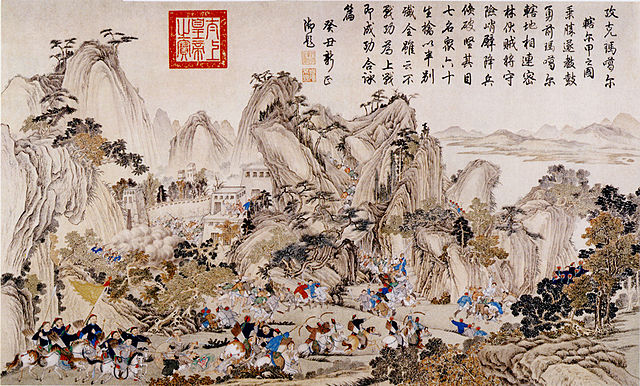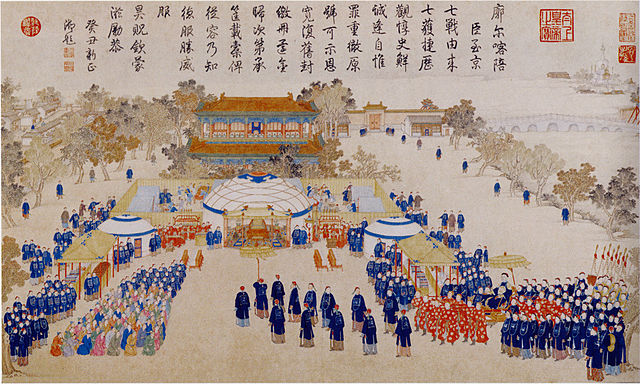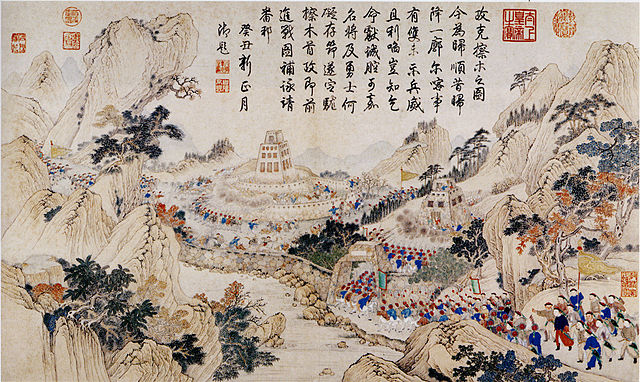Rana Bahadur Shah, King of Nepal, , was the third King of Nepal, he succeeded to the throne after the death of his father, King Pratap Singh Shah. He ruled under the regencies of his mother, Queen Rajendra Rajya Lakshmi Devi, and then of his uncle, Bahadur Shah. During this time, the kingdom was expanded by conquest to include the Garhwal and Kumaon regions, now part of India. He imprisoned his uncle, Bahadur Shah, who died in jail.
Rana Bahadur Shah
Girvan Yuddha Bikram Shah was crowned king after Shah left for Varanasi.
Rana Bahadur Shah possibly during his exile in Varanasi
Aggressive looking Rana Bahadur Shah
The Sino-Nepalese War, also known as the Sino-Gorkha War and in Chinese as the campaign of Gorkha, was a war fought between the Qing dynasty of China and the Kingdom of Nepal in the late 18th century following an invasion of Tibet by the Nepalese Gorkhas. It was initially fought between Gorkhas and Tibetan armies in 1788 over a trade dispute related to a long-standing problem of low-quality coins manufactured by Nepal for Tibet. The Nepalese Army under Bahadur Shah plundered Tibet which was a Qing protectorate and Tibetans signed the Treaty of Kerung paying annual tribute to Nepal. However, Tibetans requested Chinese intervention and the Chinese imperial military forces under Fuk'anggan were sent to Tibet and repulsed the Gurkhas from the Tibetan plateau in 1792. Sino-Tibetan forces marched into Nepal up to Nuwakot but faced a strong Nepalese counterattack. Thus, both countries signed the Treaty of Betrawati as a stalemate. The war ended with Nepal accepting terms dictated by China. Nepal became a tribute state under Qing. Nepal paid tribute to China in 1792, 1794, 1795, 1823, 1842 and 1865. Both Nepal and Tibet also agreed to accept the suzerainty of the Qing emperor.

Sino-Nepalese War
The Qing celebration of consolidation of Tibet after the Gurkha Campaign (Nepal) 1792
Capture of Camu (village southeast of Zongga)
Capture of Magaer (village northwest of Gyirong Town)







